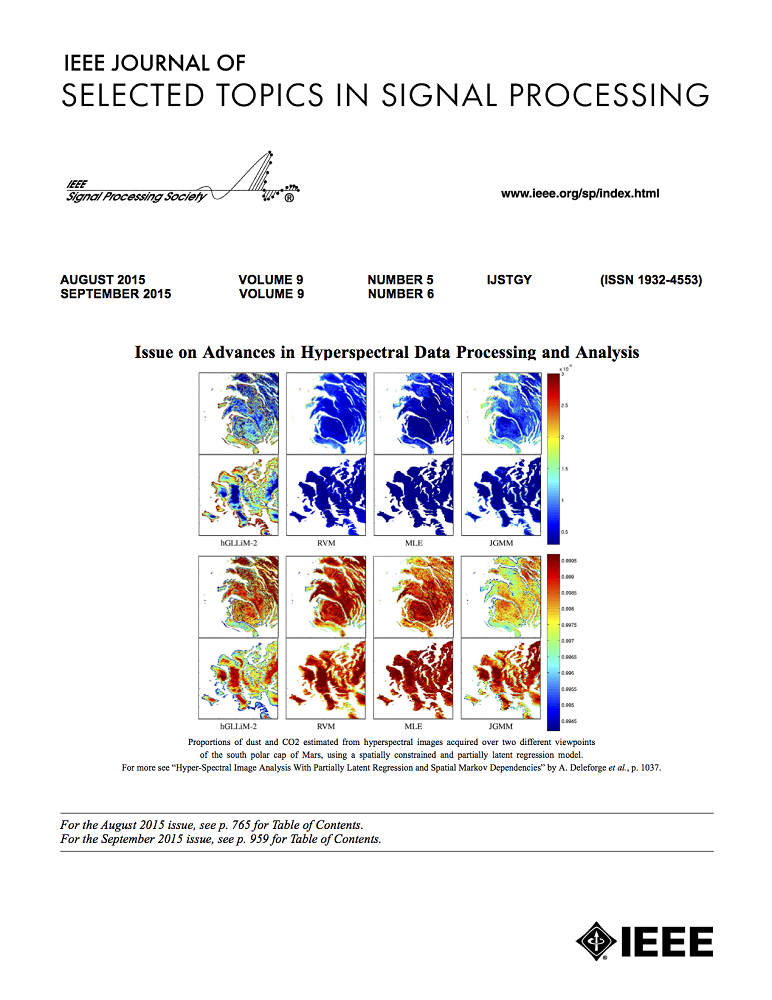Spatial Ultra-Sparse Array Formation on LEO Distributed Satellite Cluster: An Enhanced Hybrid Particle Swarm Method
IF 8.7
1区 工程技术
Q1 ENGINEERING, ELECTRICAL & ELECTRONIC
IEEE Journal of Selected Topics in Signal Processing
Pub Date : 2025-01-27
DOI:10.1109/JSTSP.2025.3534428
引用次数: 0
Abstract
The rapid development of Direct-to-device (D2D) services has put forward higher requirements for the performance of satellite antenna systems. The Spatial Ultra-Sparse Distributed Array (SUSDA) constructed by Distributed Satellite Cluster (DSC) has the characteristics of strong directivity, high flexibility and strong anti-jamming ability, which can better meet the communication requirements in future D2D scenarios. However, the non-uniform arrangement of SUSDA leads to the increase of the side lobe level (SLL) and the decrease of the overall antenna performance. To solve this problem, this paper proposes for the first time a configuration design method for a Low Earth Orbit (LEO) SUSDA capable of supporting D2D services in future 6G scenarios. It constructs a mathematical model related to the configuration design of the LEO SUSDA and provides a rapid prediction of the performance of the SUSDA radiation pattern function based on a probabilistic model. Then, an Enhanced Hybrid Particle Swarm Optimization (EHPSO) algorithm is proposed to solve the configuration design problem, which overcomes the slow convergence problem of traditional HPSO algorithm particularly when the array scale is large. The EHPSO algorithm adapts to the search requirements of different stages by adjusting parameters adaptively. It introduces a single suboptimal particle solution to enhance competition and cooperation among particles and employs a local search strategy to precisely narrow the search domain. Simulation results show that the algorithm can significantly reduce the number of iterations and running time of the algorithm while ensuring computational accuracy, which provides a new solution to the configuration design problem of large-scale LEO SUSDA in the future.LEO分布式卫星簇空间超稀疏阵列形成:一种增强的混合粒子群方法
D2D业务的快速发展对卫星天线系统的性能提出了更高的要求。由分布式卫星集群(DSC)构建的空间超稀疏分布式阵列(SUSDA)具有指向性强、灵活性高、抗干扰能力强等特点,能够更好地满足未来D2D场景下的通信需求。然而,SUSDA的非均匀排列导致了旁瓣电平(SLL)的增加和天线整体性能的下降。针对这一问题,本文首次提出了未来6G场景下支持D2D业务的近地轨道SUSDA的配置设计方法。构建了与低轨道SUSDA结构设计相关的数学模型,并基于概率模型对SUSDA辐射方向图函数性能进行了快速预测。然后,提出了一种改进的混合粒子群优化算法(EHPSO)来解决构型设计问题,克服了传统的混合粒子群优化算法在阵列规模较大时收敛速度慢的问题。EHPSO算法通过自适应调整参数来适应不同阶段的搜索需求。该算法引入单个次优粒子解来增强粒子间的竞争与合作,并采用局部搜索策略来精确缩小搜索范围。仿真结果表明,该算法在保证计算精度的同时显著减少了算法的迭代次数和运行时间,为未来大规模LEO SUSDA的构型设计问题提供了一种新的解决方案。
本文章由计算机程序翻译,如有差异,请以英文原文为准。
求助全文
约1分钟内获得全文
求助全文
来源期刊

IEEE Journal of Selected Topics in Signal Processing
工程技术-工程:电子与电气
CiteScore
19.00
自引率
1.30%
发文量
135
审稿时长
3 months
期刊介绍:
The IEEE Journal of Selected Topics in Signal Processing (JSTSP) focuses on the Field of Interest of the IEEE Signal Processing Society, which encompasses the theory and application of various signal processing techniques. These techniques include filtering, coding, transmitting, estimating, detecting, analyzing, recognizing, synthesizing, recording, and reproducing signals using digital or analog devices. The term "signal" covers a wide range of data types, including audio, video, speech, image, communication, geophysical, sonar, radar, medical, musical, and others.
The journal format allows for in-depth exploration of signal processing topics, enabling the Society to cover both established and emerging areas. This includes interdisciplinary fields such as biomedical engineering and language processing, as well as areas not traditionally associated with engineering.
 求助内容:
求助内容: 应助结果提醒方式:
应助结果提醒方式:


